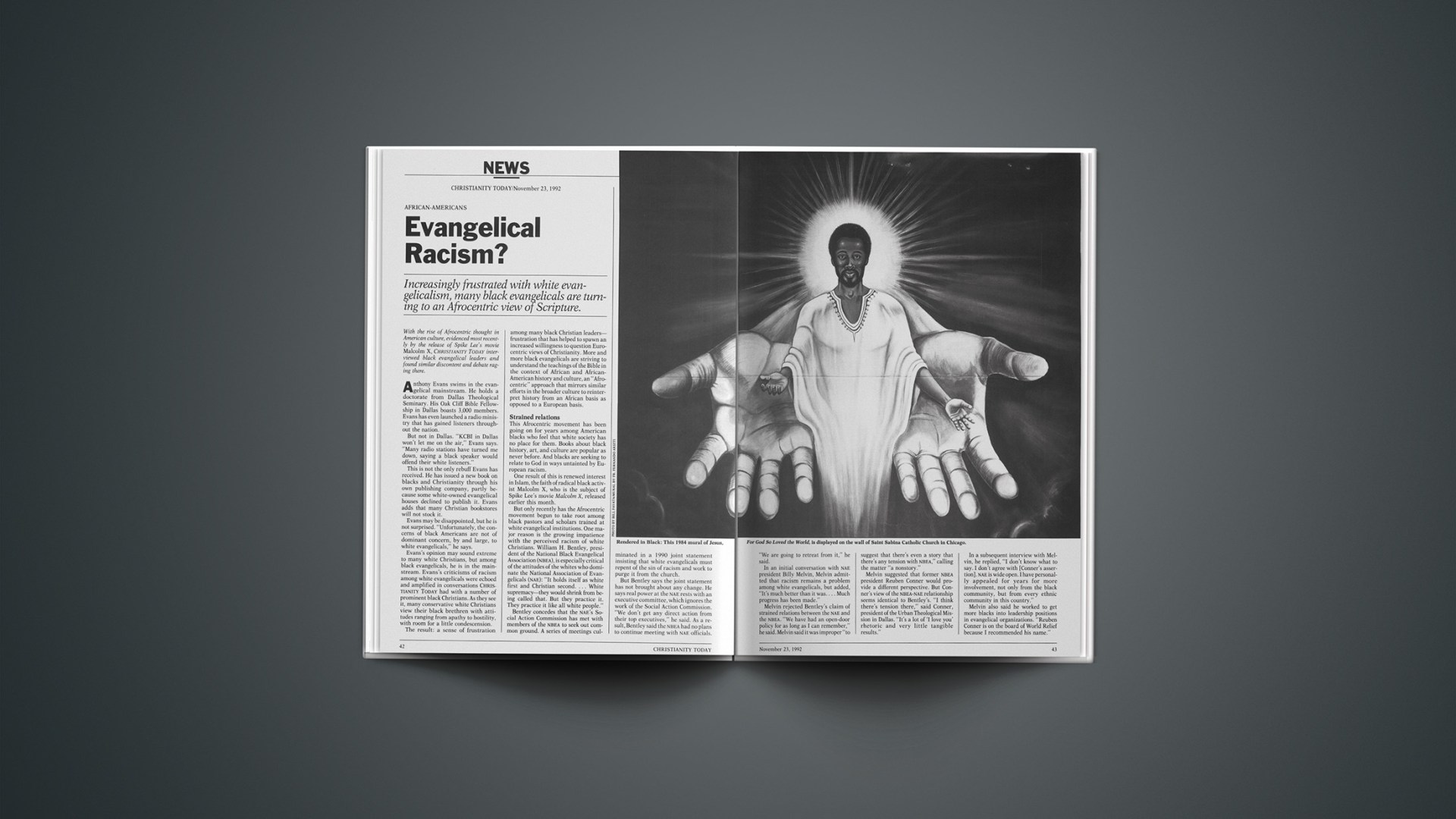These excerpts from Walter McCray’s The Black Presence in the Bible, Volume 1 (Black Light Fellowship, 1990), reveal the author’s Afrocentric interpretation of biblical events.
Contrary to the popular opinions of many who think the Bible is the “white man’s book,” most personages mentioned in the Scripture were “people of color.” Yet, [The Black Presence in the Bible] is concerned with a particular people of color—Black people.
When we affirm that there is a Black presence in the Bible, we are affirming a definition of Blackness which includes the following. First, actual “black” skin color; second, so-called “Negroid” characteristics; and third, traceable Black or African ancestry (“Black blood”). (p. 13)
The student who searches the Scripture will find that explicit Black people were genuine and pertinent members of the Biblical community of faith. In fact, the Old Testament community of faith was Black in its roots. (p. 30)
[T]he evidence—Biblical evidence, archaeological evidence, and DNA-wise evidence—points in the direction that Blackness is humanity’s norm and whiteness is the exception rather than the rule, the derivation, not the origination. (p. 88)
It is a noted fact that where ancient civilizations have emerged on the face of this earth, they were Black. Whether Egypt, Cush, Sumer, Asia, North America or South America, each cultural center of the ancient world was “Hamitic in origin.” Blacks are the progenitors of humanity and the creative originators of culture and civilizations. (p. 91)
The geneological line through which the Jewish Messiah was to come was ethnologically Black. This is demonstrable through the implicit Blackness as well as through specific Black persons who appeared in this line. (p. 124)
The Old Covenant-Messianic community was Black, the Messianic line was Black, and the Messiah Himself was Black.… The portrayals of a “white” Jesus were not given great emphasis until the fifteenth century A.D.—hundreds of years after Christ’s incarnation into humanity and His sojourn in the world. (p. 129)










